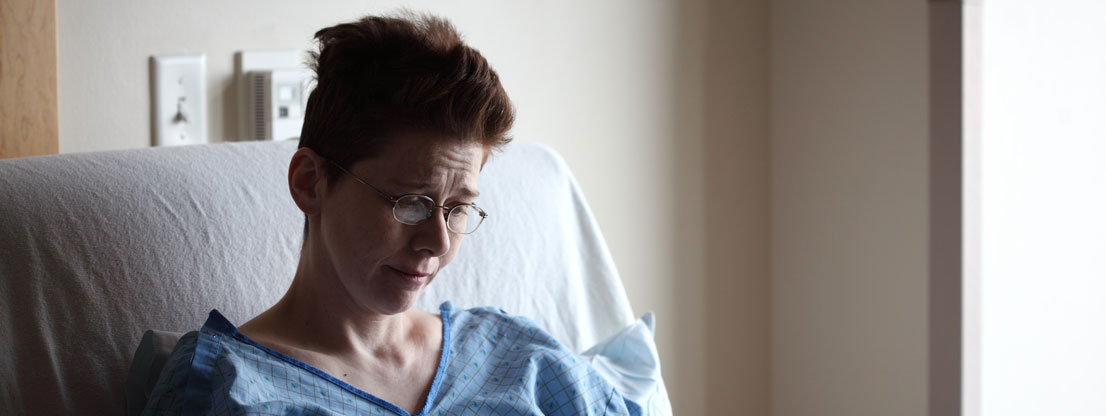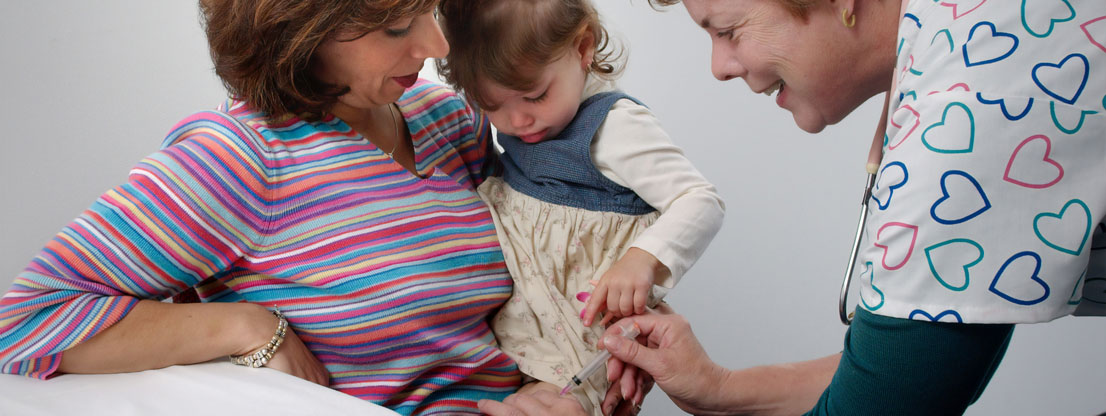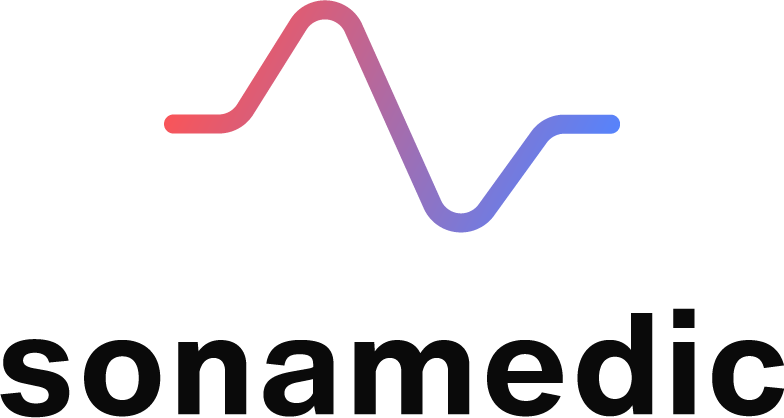Promoting health and vitality through binaural beats
Binaural beats can be used in a wide range of health sub-areas. In many areas of application, however, the research situation is unfortunately still incomplete, so that further work is certainly desirable. However, initial studies indicate that binaural stimulation can reduce patients’ fear of surgery and support the recovery process when recovering from an illness. Even with regard to chronic diseases, positive effects of treatment with binaural beats have been observed. The advantages of binaural beats are their ease of use via headphones and the gentle stimulation of brain waves, which strengthen health and vitality.
This text introduces you to four studies that explore the connection of binaural beats and health. If you are interested in other fields of application of binaural beats, you will find further background information on the subjects as a means to promote concentration, sleep and relaxation.
Binaural beats can be roughly divided into the following frequency ranges. However, the exact delimitation of the frequency ranges can differ slightly from source to source:
Delta frequency range: 0.1 – 3.9 Hertz
Theta frequency range: 4.0 – 7.9 Hertz
Alpha frequency range: 8.0 – 12.9 Hertz
Beta frequency range: 13 – 37.9 Hertz
Gamma frequency range: 38 – 50 Hertz
Do binaural beats help with fear of surgery?

1. Study: A prospective, randomized, controlled study examining binaural beat audio and pre-operative anxiety in patients undergoing general anaesthesia for day case surgery (2005)
Study summary
Fear of surgery is a widespread phenomenon that can have very unpleasant consequences for both the patient and the staff performing the operation. After several studies had already confirmed the effect of music to relieve preoperative anxiety, the researchers also looked at the effect of binaural beats in this study. This was done by using the State-Trait Anxiety Inventory to assess the anxiety level of the people who had undergone surgery. The 108 subjects were randomly divided into an experimental group for which a soundtrack with binaural beats had been created, a group listening to an identical soundtrack without binaural beats and a control group without any auditory stimulation. In the group with binaural stimulation the anxiety score decreased by 26 percent, in the audio group by 11.1 percent and in the group without intervention by 3 percentage points. These figures show that audio programmes with binaural beats have the potential to significantly reduce preoperative anxiety and to facilitate corresponding situations for those affected.

Structure and procedure of the study
108 patients older than 16 years were selected for the study. On the day of the operation, about 45 – 60 minutes before the actual procedure, the subjects were asked to complete a questionnaire using the State-Trait Anxiety Inventory (STAI) method. In the State-Trait Anxiety Inventory, subjects give information on 40 points, of which twenty were asked about situation-related temporary anxiety (STAI-S) and another twenty about anxiety as personality traits (STAI-T). The subjects were then randomly divided into three groups. For 30 minutes, they either listened to a soundtrack with binaural beats, the same soundtrack without binaural beats or, in accordance with the normal procedure, were not exposed to targeted stimulation. After 30 minutes, the subjects again completed the STAI-S part of the STAI questionnaire.
Result and conclusion
Of the 108 subjects, four were excluded from the study for different reasons. The STAI-T scores, which measure anxiety as a personality trait, showed no significant differences between the individual groups, but the original STAI-S scores, which measure situational anxiety, were higher in the group with binaural beats than in the other groups. All three groups also included a small number of patients whose STAI-S anxiety level increased slightly in the preoperative phase between the two questionnaires. However, significantly fewer subjects in the binaural beat group experienced an increase in STAI-S anxiety than in the audio-only and non-auditory stimulation groups. The researchers concluded that acute anxiety can be reduced by about half if the correct binaural beats are used.

2. Study: Effectiveness of binaural beats in reducing preoperative dental anxiety (2017)
Study summary
This study investigated the effects of binaural beats on the anxiety level of subjects prior to surgical tooth removal. The study involved 60 subjects, 30 of whom were divided into a binaural beat group and a control group. First of all, the anxiety level of the test persons was recorded. After administration of a local anaesthetic, the subjects in the experimental group listened to binaural beats of the frequency 9.3 Hz for 10 minutes. The control group was not exposed to any specific acoustic stimulation. The severity of the anxiety was measured again in both groups and the diseased tooth was then surgically removed. The level of anxiety in the control group showed no change, while the group with binaural beats showed a significant reduction in preoperative anxiety. The scientists concluded from their results that binaural beats can be used effectively to reduce anxiety before dental surgery.
Structure and procedure of the study
For the study, 60 subjects without psychiatric or auditory impairments were selected and randomly divided into experimental and control groups. Before the study began, the subjects were told that they had a diseased tooth that needed to be removed. The patients then indicated their level of anxiety using a visual analogue scale (VAS). This test consists of a 100 mm long horizontal line, one end of which was labelled “no anxiety at all” and the other end with “worst imaginable anxiety”. There were no other indications or markings on the line. Patients were asked to rate themselves by their markings on this scale. Both groups were now given a local anaesthetic. After ten minutes the anxiety level was measured again, the experimental group had heard binaural beats (left ear 200 Hz, right ear 209.3 Hz) in the meantime, the control group was not exposed to auditory stimulation. The patients were able to adjust the volume of the beats themselves to a comfortable level. During the stimulation phase, they were not allowed to keep their eyes closed as this could falsify the brain waves and thus the test results.
Result and conclusion
The results of the first anxiety measurement showed no significant difference between the experimental and control groups. In the second measurement, however, the difference was significant (p=0.006). The experimental group showed a significantly lower level of anxiety, while no difference was observed in the control group.
The treatment of an anxious patient is associated with difficulties for both the patient and the treating doctor. Anxiety can also be associated with avoidance behaviour towards necessary interventions or dental care. The researchers conclude that binaural beats can help with anxiety about dental surgery, but point out that more research is needed to get a meaningful overall picture.

Binaural beats as a remedy for tinnitus?
Study 3: Tinntrain: A multifactoral treatment for tinnitus using binaural beats
Study summary
Tinnitus is a phantom sound that is often experienced as very stressful by those affected. The effects of tinnitus can be annoyance, stress, depression, tiredness and a general reduced general feeling of well-being. This study investigated how binaural beats work as part of a multifactorial treatment for tinnitus. 26 patients participated in the study. Of these, 18 had bilateral and eight had unilateral tinnitus. The subjects were asked to complete two questionnaires, one the Tinnitus Handicap Inventory (THI) and one a stress-related questionnaire for tinnitus patients. Tests were also carried out on the patients’ physical condition and hearing ability. For the test persons, a carrier tone made to their specifications was converted into a binaural beat sound with a difference of 10 Hertz. Next, the test persons were allowed to choose background music and background natural sounds to complement the sound image. The test persons used the audio programmes with the binaural beats for three months. A decrease in tinnitus was observed in all 26 patients. The significant success observed in reducing the tinnitus in this short period of time indicates that the treatment with binaural beats is effective and shows possibilities for an approach to self-therapy.
Structure and procedure of the study
The study involved 48 patients, 18 of whom suffered from bilateral tinnitus and eight from unilateral tinnitus. The average age of the subjects was 48 years and they had had tinnitus for 4.5 years on average. The patients had already undergone a series of examinations before they were admitted to the Mount Carmel Relax Clinic for a psychological evaluation. The patients were again physically and psychologically examined here, including the Tinnitus Handicap Inventory Questionnaire (THI). Each patient answered a detailed questionnaire about the impairment caused by their tinnitus. The tinnitus was then classified on a scale of 1 (no tinnitus) to 7 (very severe tinnitus that prevents daily activities and causes insomnia and spontaneous awakening). The questionnaire was handed out before and after therapy. The physical response of the patients to the tinnitus was recorded using Galvanic Skin Response (GSR) and checked by biofeedback. A psycho-physiological profile of the patients was then created. Participants who were deemed suitable for the Tinnrain application were to come to at least two further appointments to record their response to relaxation using brain wave synchronisation through binaural beats and to prepare a customised soundtrack for them according to their personal response to individual stimuli. The carrier sound was selected according to the patients’ wishes and converted into a binaural beat of 10 Hz. The subjects then selected a guided thought journey from a male or female voice, which was presented simultaneously with the binaural beats for additional relaxation. In addition, the subjects chose music and nature sounds as background music. All the above parameters were individually summarised in a soundtrack for each patient. The patients were instructed to listen to their respective soundtrack for six hours a day for the next three months. After the three-month period, the results were evaluated.
Result and conclusion
After the three-month period, a reduction in tinnitus was observed in all 26 patients, in some cases considerably. The scientists believe that the effect of the binaural beats was so great because, on the one hand, they reduce the habitual reaction of the test persons to the tinnitus through additional relaxation and, on the other hand, they represent a positive stimulation that even partially masks the tinnitus. The researchers point out the great effect that could be achieved in a relatively short time with Tinnrain.
More quality of life through binaural beats after craniocerebral trauma?

Study 4: Effects of Binaural-Beat Stimulation on Recovery Following Traumatic Brain Injury: A Pilot Study (2005)
Study summary
This qualitative study focused on six patients recovering from brain surgery. Due to the low number of six subjects and the absence of a control group, the study does not allow statistically significant statements to be made, but it does provide insights into the individual recovery process of individuals with binaural beats under scientific observation. Recovery and convalescence after brain surgery is often a lifelong task and costs a lot of time, effort and money. Binaural beats are a simple method that allows people to influence the recovery process themselves. After a three-month treatment phase with the gentle method of binaural beats, four out of six patients reported an improved state of health. This was measured using the AMPS method (Assessment of Motor and Process Skills). The method measures the patients’ ability to manage the demands of their everyday life efficiently and independently.
Structure and procedure of the study
The patients selected for the trial had to be over 18 years old and have suffered at least two years of craniocerebral trauma (TBI). Craniocerebral trauma is the term used to describe injuries caused by an external cause (application of force). Craniocerebral trauma can result in a number of psychological and physical symptoms. The AMPs method is used to measure motor skills in everyday life and organisational or adaptive abilities. The AMPS graphic report can be used to see how these abilities change. Improvements of 0.5 logits (a measurement unit specific to AMPS instruments) indicate a clinically and statistically relevant change in the patient’s abilities. Smaller improvements may not be statistically relevant, but they can make a significant difference for the patient. In the study, the subjects’ progress was measured repeatedly. They listened to audio programmes with binaural beats at least five times a week for three months. The volunteers were given five CDs, four of which were designed to promote attention and concentration and to help them relax and fall asleep better. The test persons were free to choose which pieces they wanted to listen to and used stereo headphones for the stimulation. The participants in the study kept an audio diary, with details of the selected CD, what time of day they listened to it, what activities they did and a place for additional comments.
The subjects also completed a Short Form(36) Health Questionnaire (SF-36), which provides information on nine different aspects of health: Physical functioning, physical pain, general health perception, physical role function, emotional role function, vitality, social functioning, psychological well-being and health change.
In the PANAS self-evaluation, the test persons gave additional information on positive (positive affect = PA) and negative (negative affect = NA) emotions and influences.

Results of the study
Of the six patients, two showed little or no improvement. They were the oldest patients, 52 and 75 years old, and they listened to the audio programmes only as directed. The four other participants all listened to the audio CDs even more often than previously agreed.
Patient 1:
A young man who was injured in a traffic accident as a child. He listened to the CD mainly to relax and sleep.
The AMPS evaluation showed an improvement of 0.2 logits in his motor skills, but an increase of 1.3 logits in his adaptive / organisational skills, which is a statistically significant improvement. The PANAS self-assessment showed a positive increase of 7 points for positive effects and a decrease of 7 points for negative effects, indicating a more fulfilling social life and less self-perceived stress.
The SF-36 test showed a positive improvement in health aspects: mental well-being (+3), vitality (+5), physical pain (+1), general health perception (+3), and social functioning (+4). Only physical functioning decreased by one point.
Patient 2:
A young woman of 18 who had a bicycle accident three years earlier. She mainly used the CDs to fall asleep.
The AMPS evaluation showed only small changes in her. Motor skills decreased by 0.1 logits and adaptive and organisational skills increased by 0.3 logits. Both findings are not statistically significant.
In the PANAS self-assessment, she recorded an increase of +22 for positive affects, which indicates an improved social situation. The negative affects increased by three points, which indicates a slightly higher level of self perceived stress.
The SF36 test showed her an increase for five health aspects: Mental well-being (+1), vitality (+10), physical pain (+2.1), physical functioning (+3) and physical role function (+1).
Patient 3:
A 45-year-old woman with husband and three children. She had a car accident eight years ago. It took several years before she was diagnosed with a craniocerebral trauma. She had no specific hearing preferences. The AMPS evaluation showed no change.
The PANAS self-evaluation showed an improvement of +7 points for positive aspects, which indicates an improved social life and more positive experiences during this period. The negative influences were reduced by 7 points, which indicates less stress and less unpleasant experiences.
The SF-36 test showed an improvement in the following health aspects:
Mental well-being (+1), vitality (+10), physical pain (+2,1), physical functioning (+3), physical role function (+2) and health change (+39 points).
Patient 4:
A forty-year-old woman with husband and daughter. Seven years earlier she had suffered cardiac arrest, resulting in a craniocerebral trauma. The test person had no specific hearing preferences.
The AMPS evaluation showed an improvement of 0.6 logits in motor skills, which is statistically and clinically relevant. Adaptive and organisational skills increased by 0.2 logits. This value is not statistically significant.
The PANAS self-evaluation showed a deterioration of -11 points for positive aspects, which indicates a reduced satisfaction with social life and a reduction in pleasant experiences. On the other hand, negative influences decreased by -6 points, which indicates less stress and less unpleasant experiences.
The SF36 test showed a change in six aspects: Vitality (+1), physical pain (+1.9), general health perception (+2), social functioning (+3), psychological well-being (-1) and health change (-16).
Conclusion
In the recovery process after craniocerebral trauma, there is a lack of non-invasive methods with which patients themselves can influence their condition. Although the findings of the study are not significant due to the small number of test persons, the results and the feedback from the test persons and their families suggest promising positive effects. The researchers point out that more trials are needed to be able to make a more meaningful judgement about the effectiveness of binaural beats in the recovery process of head and brain trauma patients.




